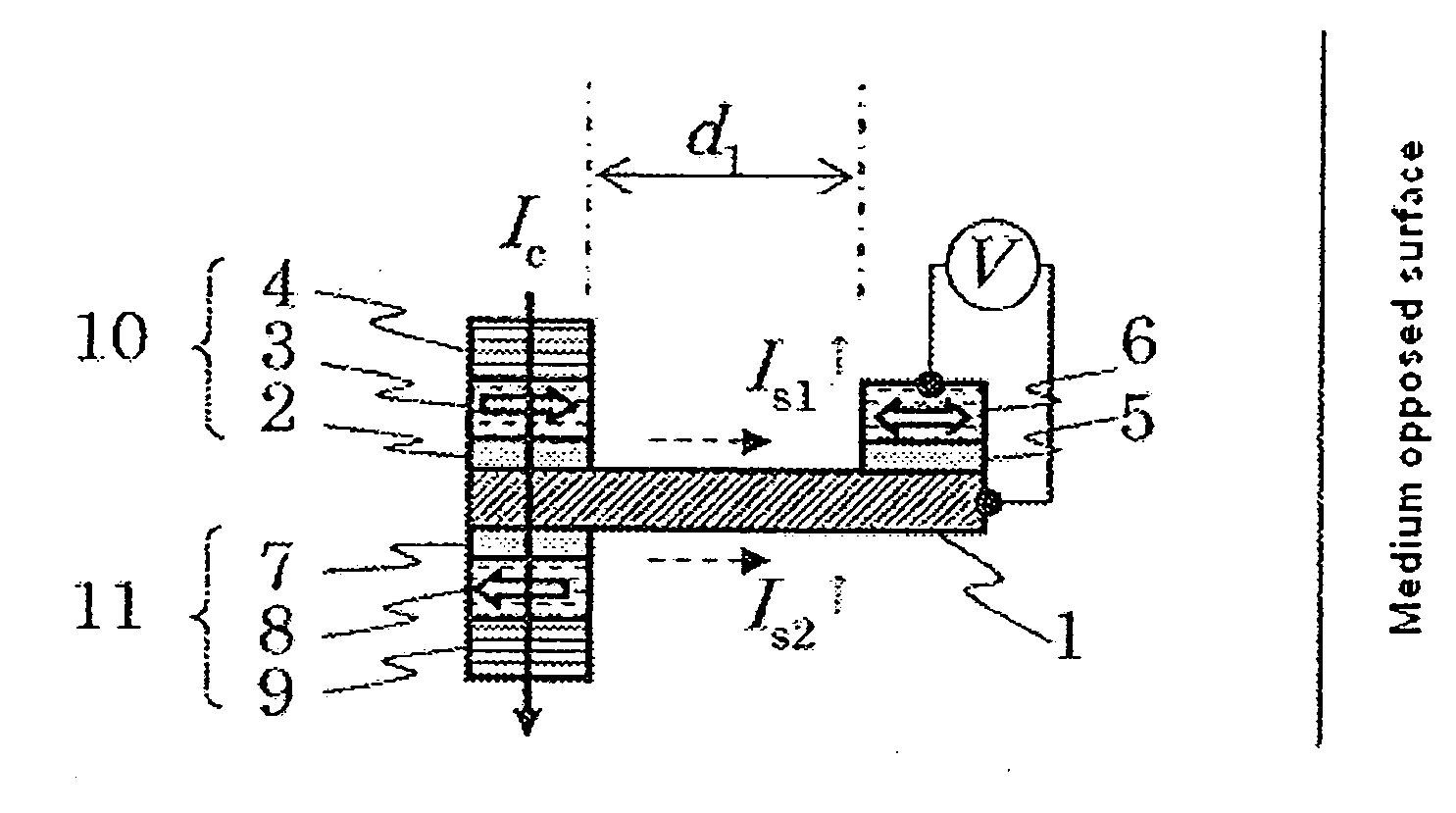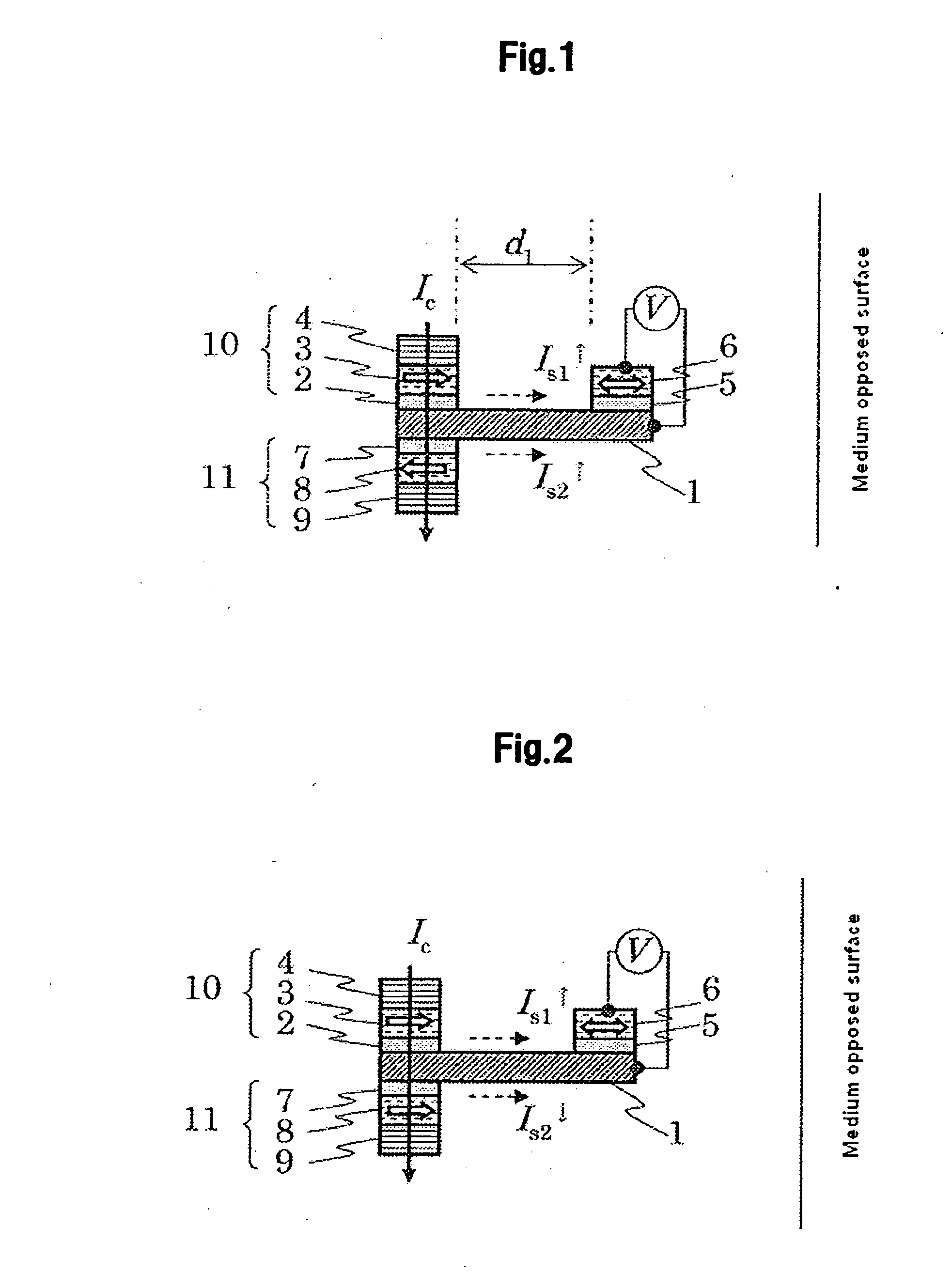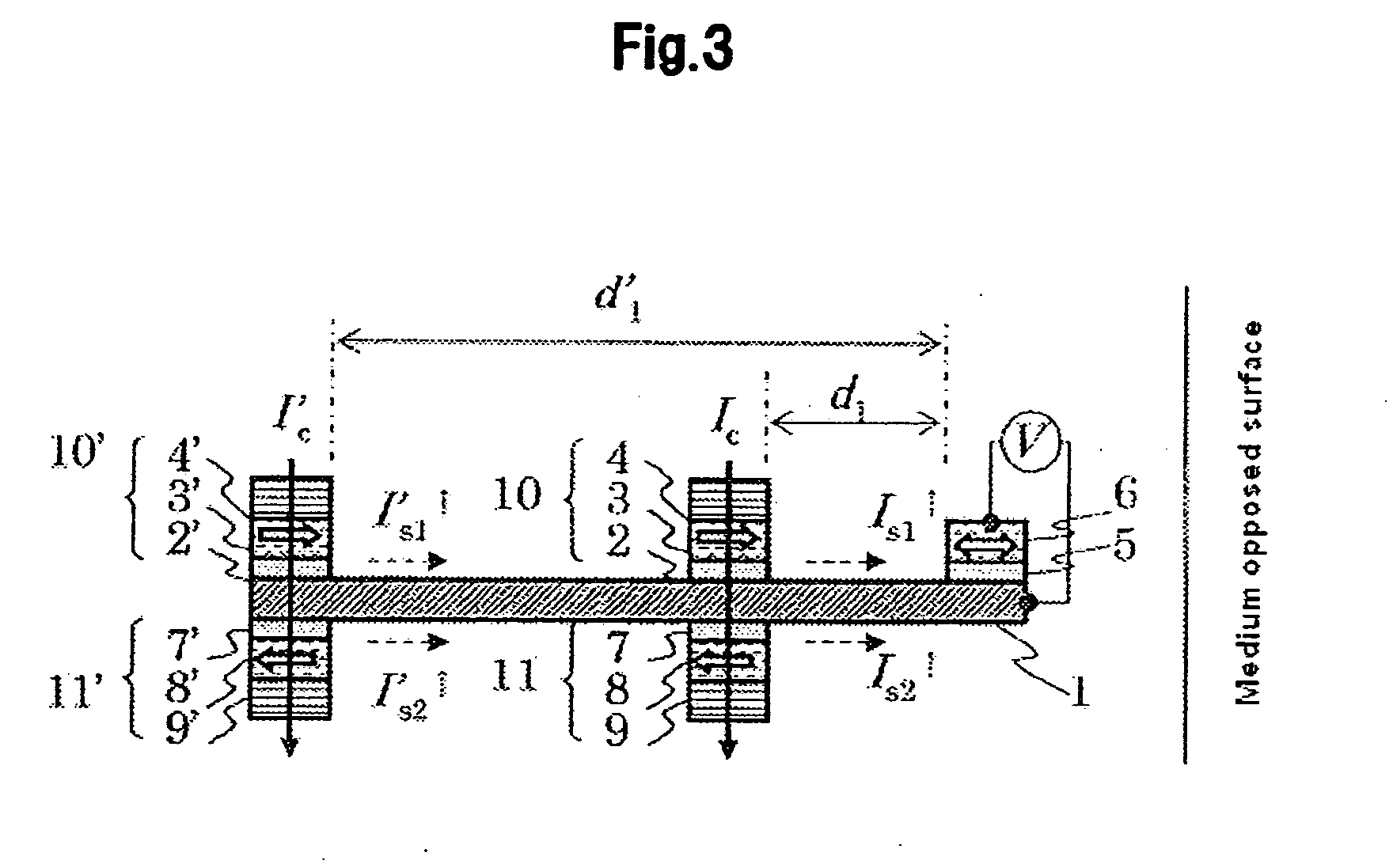Magnetic head and magnetic recording apparatus
a magnetic recording and head technology, applied in the field of magnetic recording apparatuses, can solve the problems of difficult to apply the medium of 1 tbit/insup>2 /sup>or more in respect of resolving power, and the output of conventional spin accumulation elements is not enough
- Summary
- Abstract
- Description
- Claims
- Application Information
AI Technical Summary
Benefits of technology
Problems solved by technology
Method used
Image
Examples
example 1
[0048]To verify the effect of the first spin injection element of the invention as shown in FIGS. 1 and 7(a)-7(d), two kinds of spin accumulation element were fabricated. For the first spin accumulation element, the material of the non-magnetic conductor 1 was Al. The Al fine line as used in the example 1 had a line width wN of 100 nm, a film thickness tN of 10 nm, and a length LN of 3 μm, with the electrical resistivity ρN being 2.5 μΩcm. An Al—Ox barrier layer was employed as the first tunneling junction 2, the second tunneling junction 7 and the third tunneling junction 5. The Al—Ox barrier was formed by naturally oxidizing the surface of the Al fine line. Co having a film thickness of 10 nm was employed as the first magnetic conductor 3, the second magnetic conductor 8 and the third magnetic conductor 6. The line width wco1, wco2 of the first magnetic conductor Co1 and the second magnetic conductor Co2 was 200 nm, and the line width wco3 of the third magnetic conductor Co3 was 1...
example 2
[0051]In the example 2, the fourth spin accumulation element of an embodiment of the invention was fabricated as shown in FIG. 4(a). The material and size of the element were the same as in the example 1, except that the second spin injection part 12 was provided on the non-magnetic conductor 1 on the same side of the first spin injection part 11 with a spacing from it, as shown in FIG. 4(a). Assuming that the interval distance between the first spin injection part 10 and the second spin injection part 11 was Δd (=d2−d1), three kinds of Δd=100, 300 and 500 nm were prepared, whereby the non-local measurement was conducted in the range of 30 nm≦d1≦1000 nm. A magnetic field was applied in parallel to the fine line direction of the non-magnetic conductor 1.
[0052]FIG. 6 shows the electrode distance d1 dependency of the output voltage ΔV in the case of Δd=100, 300 and 500 nm in the fourth spin accumulation element of an embodiment of the invention. For comparison, the result of the conven...
example 3
[0053]In the example 3, the fifth spin injection element of the invention was fabricated as shown in FIGS. 9(a)-9(c) and FIGS. 11(a)-11(d). The non-magnetic conductor 1 as employed in the example 3 was the Al fine line having the size of the line width wN=100 nm, the film thickness tN=10 nm, and the length LN=3 μm, with the electrical resistivity ρN being 2.5 μΩcm. An Al—Ox barrier layer that was produced by naturally oxidizing the surface of Al was employed as the tunneling junctions 2 and 5 as shown in FIGS. 9(a)-9(c). Co having a film thickness of 10 nm was employed as the first magnetic conductor 3 and the third magnetic conductor 6. The line width of the first magnetic conductor Co1 was wco1=200 nm and the line width of the third magnetic conductor Co3 was wco3=100 nm. The magnetization of Co1 was fixed in one direction by the antiferromagnetic conductor MnIr having a film thickness of 10 nm, and the distance between Co1 and Co3 was narrowed down to d1=30 nm at minimum. On the ...
PUM
| Property | Measurement | Unit |
|---|---|---|
| thickness | aaaaa | aaaaa |
| magnetization | aaaaa | aaaaa |
| external magnetic field | aaaaa | aaaaa |
Abstract
Description
Claims
Application Information
 Login to View More
Login to View More - R&D
- Intellectual Property
- Life Sciences
- Materials
- Tech Scout
- Unparalleled Data Quality
- Higher Quality Content
- 60% Fewer Hallucinations
Browse by: Latest US Patents, China's latest patents, Technical Efficacy Thesaurus, Application Domain, Technology Topic, Popular Technical Reports.
© 2025 PatSnap. All rights reserved.Legal|Privacy policy|Modern Slavery Act Transparency Statement|Sitemap|About US| Contact US: help@patsnap.com



